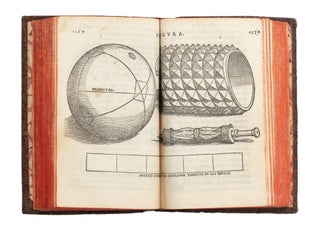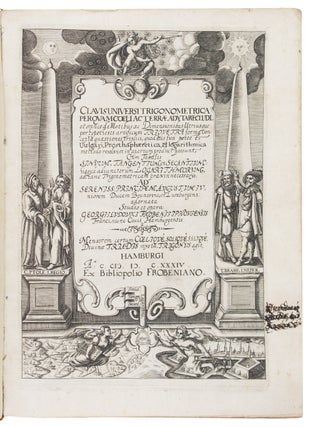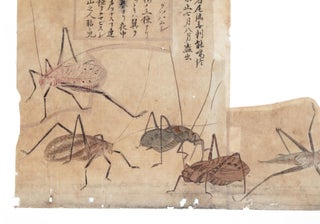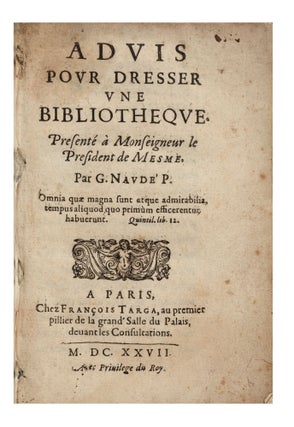![Item ID: 6705 Da cheng zao xiang gong de jing 大乘造像功徳經; in Japanese: Daijo zozo kudoku kyo [Creation of the Statue, a Pious Act]; title in manuscript on upper cover: “Zozo kudoku kyo.”. trans TIYUNBANRUO 提雲般若, in Sanskrit or, DEVENDRAPRAJNA.](https://jonathanahill.cdn.bibliopolis.com/pictures/6705.jpg?width=768&height=1000&fit=bounds&auto=webp&v=1574699669)
The Story of the First Statue of Buddha;
Printed in Moveable Types
Da cheng zao xiang gong de jing 大乘造像功徳經; in Japanese: Daijo zozo kudoku kyo [Creation of the Statue, a Pious Act]; title in manuscript on upper cover: “Zozo kudoku kyo.”
14; 13 folding leaves. Two parts in one vol. Large 8vo, cont. or later dark wrappers dyed with persimmon juice (shibubiki), new stitching. [Japan, probably Kyoto: printed with moveable types, ca. 1615-40].
A very rare edition printed with moveable types, apparently unrecorded in the standard bibliographies, of the story — or legend — of the creation of the first statue of Siddhartha Gautama or Gautama Buddha, the founder of Buddhism. The statue, executed while Buddha was still alive, was commissioned by King Udayana of Kaushambi, a contemporary of Buddha. It was the very first image of Buddha, and is especially important as it was carved from life. Copies of this statue made their way to China with the spread of Buddhism and, later, as we shall see, to Japan.
The text provides a history of the creation of the first statue of Buddha, which is perhaps the most famous of all Buddha images. King Udayana commissioned the statue “so that he could gaze upon the sacred form of the Buddha while the latter was off preaching to his mother in the heaven of Indra. Buddha’s disciple Maudgalyayana transported thirty-two craftsmen up to the heavenly realm so that they could observe the special marks of the Buddha firsthand, thereby insuring the representational accuracy of the image they created. When the Buddha eventually returned to the earth, King Udayana’s statue rose into the air to greet him of its own accord, and the Buddha proclaimed that it would one day help to transmit his teachings.”–Brown, ed., The Oxford Handbook of Religion and the Arts, p. 371. We learn that the statue was carved out of sandalwood and that later copies were made of gold, silver, bronze, lead, tin, or iron, as well as of wood.
This text was translated by the Khotanese monk Tiyunbanruo (d. 691 or 692), whose original Sanskrit name was Devendraprajna. Khotan was an ancient Iranian Saka Buddhist kingdom on the branch of the Silk Road that ran along the southern edge of the Taklamakan Desert, near modern-day Xinjiang. Tiyunbanruo came to Luoyang, the “Eastern Capital” of the Tang dynasty of China, in about 688, with a considerable reputation as a Buddhist missionary and set up a bureau to translate Buddhist texts into Chinese. An earlier edition of this text was published in Beijing in 1593, and only one copy is known, at the BnF.
This book was probably printed and issued as a way to reinforce the legitimacy of the famous Buddha statue of the temple of Seiryoji, in the Saga fields of Kyoto. It is one of the chief objects of religious veneration in Kyoto. A copy of the original statue, also commissioned by King Udayana, was brought from the castle at Kaushambi in north-central India to China by Hsuan-tsang in 645. The statue moved many times and ultimately arrived at Kaifeng, the Sung capital. The Japanese monk Chonen (938-1016), who spent the years 983-86 in China studying and collecting texts, had worshiped the statue in Kaifeng and commissioned men in 984 to carve a copy to bring back to Japan. The copy was ultimately installed at Seiryoji and, according to Japanese tradition, the Chinese “original” and Chonen’s copy had miraculously changed places — the Seiryoji Buddha was actually the authentic example commissioned by Udayana.
The Seiryoji Buddha is “probably the most important, best-documented and best-preserved sculpture now existing which represents the school and tradition of Buddhist sculpture connected with the sacred Udayana image of the living Buddha of which Hsuan-tsang brought a copy to the court at Ch’ang-an.”–Henderson & Hurvitz, “The Buddha of Seiryoji: New Finds and New Theory,” Artibus Asiae, Vol. 19, No. 1 (1956), p. 43–(and see the whole fascinating article).
As mentioned above, this rare work is printed with moveable types. It was, at one time, owned by the great Japanese dealer Shigeo Sorimachi. The chitsu has the characteristic handwriting on the label of Sorimachi’s assistant, Mr. Mori, who has written: “Zozo kudoku kyo. Genna kan’ei chu kan. Kokatsu ban” [“Creation of the Statue, a Pious Act. From Genna to mid-Kan’ei edition (ca. 1615-40). Moveable type”]. It is not cited by Kazuma Kawase, Kokatsuji-ban no kenkyu [Study of the Early Typographic Editions of Japan] (1967), the definitive bibliography of Japanese moveable type books. There is no copy in WorldCat nor the Union Catalogue of Early Japanese Books.
In very good condition. The first ten folding leaves, which are a little stained, have some repaired worming and strengthening. The following leaves have some worming, some carefully repaired and others, as the worming lessens, not repaired. Several characters affected by the worming. As mentioned above, the wrappers have been dyed with persimmon juice, which serves a dual purpose: to strengthen the paper and act as an insect repellent.
❧ Wang Zhenping, “Chonen’s Pilgrimage to China, 983-986,” Asia Major, Third Series, Vol. 7, No. 2 (1994), pp. 63-97. Martha L. Carter, The Mystery of the Udayana Buddha (Naples: 1990).
Price: $25,000.00
Item ID: 6705




